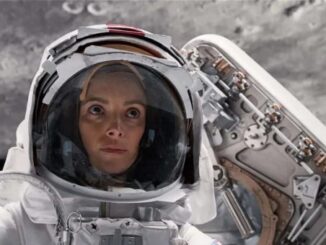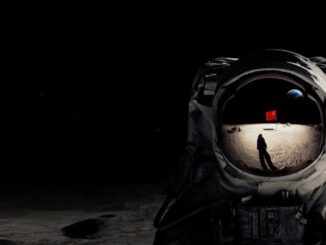
The premier of season four of the Apple TV+ alternate history series For All Mankind is approximately a month away, so the producers of the show came to New York Comic Con to offer a sneak peek as to what is to come. Additionally, they dropped the first trailer for the season hinting at the troubles that may be brewing at Happy Valley, the first colony of Mars.
For All Mankind is based on a simple premise – How would the space race played out if the Russians beat the US to the moon in 1969? Each season takes a look at the subsequent strides humanity takes over the ensuing decades.
The series stars Joel Kinnaman, Wrenn Schmidt, Krys Marshall, Edi Gathegi, Cynthy Wu and Coral Peña. Toby Kebbell, Tyner Rushing, Daniel Stern and Svetlana Efremova are also joining the cast for the new season. Some societal events play out similar to the way they did in our world – for example, Ronald Reagan was still president in the 1980s of the For All Mankind world – but others are drastically different. Season three ended in the late 1990s with the beginnings of a colony being built on Mars similar to lunar bases established in previous seasons.
While the ongoing Screen Actors Guild strike is preventing the cast of the show from attending the show, a number of behind-the-scenes folks were able to take the stage during the show’s panel to discuss the upcoming season including production designer Seth Reed, technical consultant Garrett Reisman, costume designer Esther Marquis, showrunners Matt Wolpert and Ben Nedivi and show co-creator Ronald D. Moore.
“It’s a challenge because we had to greatly expand on everything that you saw in season three,” admits Reed in regards to the how the show’s between seasons time jumps affect his approach to each new season. “Season three, they were barely on Mars. Now we have two to three hundred people on Mars. We’ve got rovers going every which way. We have a lot of space transportation. And as you’ll see, they’re going to start exploring nearby sources of minerals and energy, like an asteroid they can capture. So that necessitated a redesign in the propulsion systems and necessitated a re-understanding of how you would, because nobody actually exactly knows this, there’s been some theories, how you would capture an asteroid and pull it somewhere or push it somewhere, which we had a whole conversation. Should it be pushed or pulled?”
Reisman, a former NASA astronaut, concurs that the work in keeping the show grounded in science gets more challenging as the show’s alternate history timeline moves further away from reality.
“Now we’re in 2003 so we still haven’t caught up with real-time, but we have fusion and ion drives, plasma drives, and all this technology that we actually don’t have today in 2023,” Reisman states. “So that does make it more challenging, because seasons one and two were kind of easy for me, like ‘Well, where’s this thing in the space shuttle?’ I was like, ‘Well, let me pull out my old diagram,’ like, ‘Oh, it’s right here.’ But now Seth comes to me, and he is like, ‘Well, where should the stick be in this?’ I’m like, ‘Well, I don’t know. This thing doesn’t exist,’ this ranger spaceship. It’s like we just made it up, so it could be anywhere.”
Marquis concurred, adding “Even though the things that we’re doing, like a spacesuit design for a Mars surface, hasn’t actually happened. So the job for me was to create this suit that exists in 2003, but it’s not a futuristic suit. It’s a suit that’s squarely sitting in 2003. So we have to believe that that suit would exist in that time, yet it still needed to encompass technology and things that were moving along for our show. So there was a lot of complicated juggling acts that I found myself doing.”
But as the show moves further away from current levels of technology, Moore states that the key to approaching how the others on stage design the world is insuring plausable accuracy as much as possible.
“We take pride in always trying to keep the show scientifically plausible,” he says. “It’s scientifically accurate to the extent that we can be. In Seasons 1 and 2, when we were dealing with real spacecraft, we took pains to have people who knew how they actually operated [or] what the vehicles were capable of, how we treated the moon, what was realistic to happen, what wasn’t, how it moved, its relationship to Earth, on and on. We always wanted the audience to believe these things could actually happen.”
For All Mankind season four launches on November 10 on Apple TV+.





